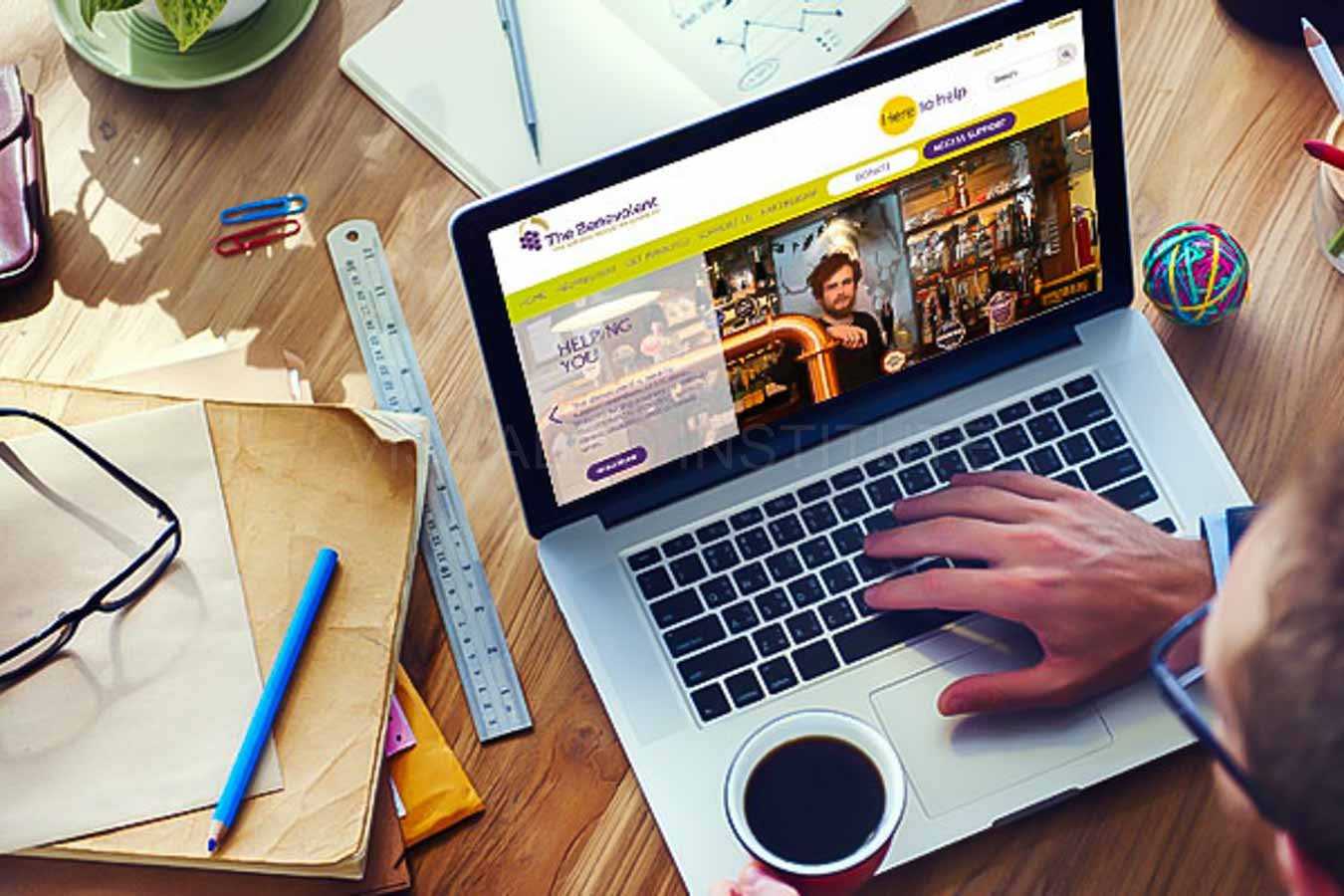Web Design London Ontario Experts for Personalized Projects
Web Design London Ontario Experts for Personalized Projects
Blog Article
Exactly How to Properly Combine Appearances and Functionality in Web Layout
When designing a site, you require to strike an equilibrium in between aesthetic appeals and capability. It's not practically looking good; your style needs to also serve a function and overview users successfully. By concentrating on simplicity and user-friendly navigation, you can produce an engaging experience. What components absolutely improve functionality while keeping aesthetic charm? Let's explore the vital principles that can result in an unified mix of appeal and feature.
Recognizing the Significance of Aesthetics and Capability
When you design a site, understanding the balance in between appearances and capability is crucial for developing an efficient individual experience. An aesthetically appealing website grabs interest, however it's the functionality that maintains customers involved. If your site looks fantastic but is tough to navigate, site visitors will swiftly weary and leave.Consider your target market and what draws them in. You intend to develop a design that mirrors your brand while making sure ease of usage. Streamlined designs, intuitive navigating, and clear phone call to activity can boost both appearances and performance.

Principles of Effective Website Design
To create a reliable website design, you require to comply with numerous key principles that improve both user experience and aesthetic appeal. Prioritize simpleness; a tidy design aids users browse quickly. Make use of a constant color pattern and typography to maintain coherence across your website. This fosters knowledge and trust.Next, guarantee your style is receptive. Individuals accessibility web sites on numerous devices, so your style should adapt flawlessly. Take notice of visual pecking order; highlight essential elements with shade, size, or positioning to direct users' focus.Finally, include enough white space. It avoids clutter and makes material more absorbable. Bear in mind, efficient web style equilibriums aesthetic appeals and capability, so every design choice need to serve a function. By adhering to these principles, you'll develop a website that's not just aesthetically enticing but also straightforward, ultimately keeping visitors involved and encouraging them to return.
Prioritizing User Experience
When focusing on customer experience, you'll desire to begin by recognizing what your customers absolutely require. Streamlining navigating style can make a significant distinction in exactly how quickly they locate what they're seeking. Additionally, boosting aesthetic pecking order helps guide their focus to one of the most crucial aspects on your site.
Understanding Customer Demands
Comprehending individual demands is necessary for producing an appealing web experience that maintains visitors coming back. To accomplish this, you must determine the goals and choices of your target audience. Begin by conducting customer research, like studies or interviews, to gather understandings on what users value most. When engaging with comparable sites, pay focus to their pain points and difficulties. This details allows you to customize your design, making sure capability aligns with individual assumptions. Additionally, think about developing user personalities that stand for various sectors of your audience, assisting you envision their needs during the style procedure. When you prioritize comprehending individual demands, you create a site that not just looks great however additionally provides a seamless, delightful experience that cultivates commitment.
Simplifying Navigation Design

Enhancing Aesthetic Power Structure
A strong visual hierarchy is vital in leading users through your site and guaranteeing they engage with essential web content. To accomplish this, use color, spacing, and dimension strategically. Make crucial elements like headings larger and bolder than body message, attracting interest promptly. Make use of contrasting shades to highlight phone call to action, urging clicks. In addition, use enough white room to different sections, making content digestible and inviting.Consider the flow of information; prepare aspects realistically, leading customers' eyes from one point to the following. Use aesthetic hints, like lines or arrows, to route attention. By prioritizing aesthetic pecking order, you enhance individual experience and increase the probability of conversions, ensuring your web site is both aesthetically pleasing and functionally efficient.
Shade Theory and Its Influence on Usability
While selecting the appropriate colors for your internet site may appear like a small detail, it considerably influences functionality and customer experience. Color impacts just how users view details and can prevent or enhance navigation. Contrasting shades can aid vital aspects stand out, making it less complicated for visitors to find what they need.Additionally, take into consideration the psychology of colors: blue usually inspires count on, while red produces seriousness. Understanding your target market can lead your shade selections, guaranteeing they resonate well.Moreover, consistent color pattern help build brand identity, Learn More Here making your site much more unforgettable. Be cautious-- too many colors can bewilder customers. Adhere to a restricted combination that matches your content and maintains clarity.Incorporating ease of access is also vital; verify your color mixes are pleasant for those with visual disabilities. By thoughtfully applying shade concept, you'll improve functionality and develop a much more interesting individual experience.
Typography: Balancing Style and Readability
Color selections set the stage for your site, yet typography plays an equally essential function in improving individual experience. You want your message to interact clearly while additionally mirroring your brand's personality. Beginning by selecting fonts that are not just appealing but additionally clear. Sans-serif fonts usually function well for digital displays, as they're simpler to review at different sizes.Maintain a hierarchy by making use of different typeface sizes and weights; this overviews individuals through your web content effortlessly. Take into consideration line spacing and letter spacing; too limited can annoy viewers, while as well loosened can interrupt the circulation. Limitation your font options to 2 or three to maintain the design cohesive.Finally, always check your typography across different tools and web browsers. What looks excellent on one screen might out another. Stabilizing design with readability assurances that your message reverberates, maintaining your audience informed and engaged.
Receptive Design: Making Aesthetics Work With All Tools
To guarantee your site looks wonderful on any gadget, you'll require to welcome responsive style concepts. This strategy guarantees your website adapts to various display sizes, offering an excellent user experience. Begin by making use of liquid grids and adaptable images that scale perfectly. Instead of taken care of measurements, select percentages and relative units, enabling your layout to adjust dynamically.Next, execute media queries in your CSS. These let you apply different styles based on gadget attributes, like display size. In this manner, you can keep visual charm while assuring functionality.Don' t forget touch targets; make certain buttons and web links are very easy to touch on smaller sized displays. Focus on necessary material, so individuals can quickly navigate your site despite their device. By focusing on these components, you'll develop an engaging, aesthetically appealing experience that fulfills the demands of all individuals, whether they're on a smart device, desktop computer, or tablet .
Performing Functionality Testing for Continuous Renovation
To enhance your web design, you require to establish clear functionality goals that align with customer requirements. By carrying out individual tests, you can gather beneficial comments on how real individuals engage with your site. Evaluating these outcomes will certainly help you make educated enhancements and create an extra efficient customer experience.
Specifying Usability Goals
While visual appeals can draw customers in, defining use goals is click here for more info important for guaranteeing their experience remains smooth and rewarding. Begin by recognizing what you desire individuals to accomplish on your website (website design london Ontario). Consider their habits, tasks, and demands. Are they seeking details, buying, or enrolling in a newsletter? Develop clear criteria to gauge success, like task conclusion prices or time on task. Focus on user-friendly navigating, accessible web content, and responsive design to improve use. Consistently revisit these goals as individual assumptions evolve. By defining functionality objectives, you develop a structure for evaluating and improving your site's efficiency. This concentrate on use not just boosts user contentment yet also reinforces the overall efficiency of your style
Carrying Out Customer Examinations
Conducting user tests is vital for fine-tuning your website and guaranteeing it meets your audience's requirements. Begin by recognizing your target customers and creating a test plan that outlines your objectives. Use a mix of measurable and qualitative approaches, such as studies, interviews, and task-based observations, to gather comprehensive feedback. Welcome individuals to browse your site while you observe their interactions and keep in mind any problems they experience. Encourage open dialogue to catch their thoughts and sensations regarding the layout and capability. Keep sessions short and focused, guaranteeing you cover vital locations without overwhelming users. Ultimately, make certain to document all searchings for, as this details will be indispensable for making informed layout choices that enhance both visual appeals and usability.
Assessing Test Outcomes
Exactly how can you successfully evaluate the outcomes of your functionality examinations to drive constant improvement? Beginning by categorizing responses into usual themes. Try to find patterns in user actions that highlight pain points or locations for enhancement. Usage quantitative data, like job completion prices and time on task, to determine usability objectively. Do not forget to think about qualitative insights from individual remarks; they usually expose underlying concerns that numbers can't show. Focus on one of the most impactful findings and develop workable items for your layout group. Keep in mind, it has to do with iterating-- carry out adjustments, then examination again. This cycle of screening, assessing, and refining assists you equilibrium visual appeals and capability, guaranteeing your website satisfies individual demands effectively while maintaining visual charm.
Regularly Asked Inquiries
Just how Do I Pick the Right Shade Palette for My Website?
To pick the best color combination for your website, consider your brand name's character, target audience, and emotional effect (website design london Ontario). Use shade psychology, develop consistency, and guarantee readability. Examination combinations to see what resonates ideal with site visitors
What Equipment Can Assist With Web Design Appearances and Performance?
You can make use of tools like Adobe XD, Figma, and Map out to improve your website design's looks and capability. These systems use user-friendly user interfaces, partnership functions, and pre-made themes to enhance your innovative process and improve your designs.
Just How Can I Include Animations Without Jeopardizing Performance?
To integrate animations without compromising capability, focus on subtle effects that boost individual experience. Use CSS animations for smoother communications, warranty fast load times, and examination on numerous gadgets to maintain performance while adding aesthetic allure.
What Prevail Errors to Avoid in Web Layout Looks?
When making, prevent messy layouts, inadequate shade choices, and irregular font styles. Don't forget mobile responsiveness, as it can push away customers. Verify your design straightens with your brand, developing a seamless experience that involves visitors efficiently.
Just how Typically Should I Update My Website's Layout for Optimal Aesthetics?
You must update your web site's design every 1-2 years to stay up to date with trends and preserve ideal appearances. On a regular basis renewing visuals assists involve guarantees and visitors your website remains user-friendly and enticing. When you design a web site, understanding the balance in look at here between aesthetics and capability is vital for developing an effective individual experience. To develop a reliable web style, you require to stick to numerous key principles that improve both customer experience and aesthetic appeal. Users accessibility websites on numerous devices, so your design needs to adapt perfectly. When focusing on individual experience, you'll desire to begin by recognizing what your individuals really require. Begin by performing customer research, like studies or interviews, to gather insights on what individuals value most.
Report this page